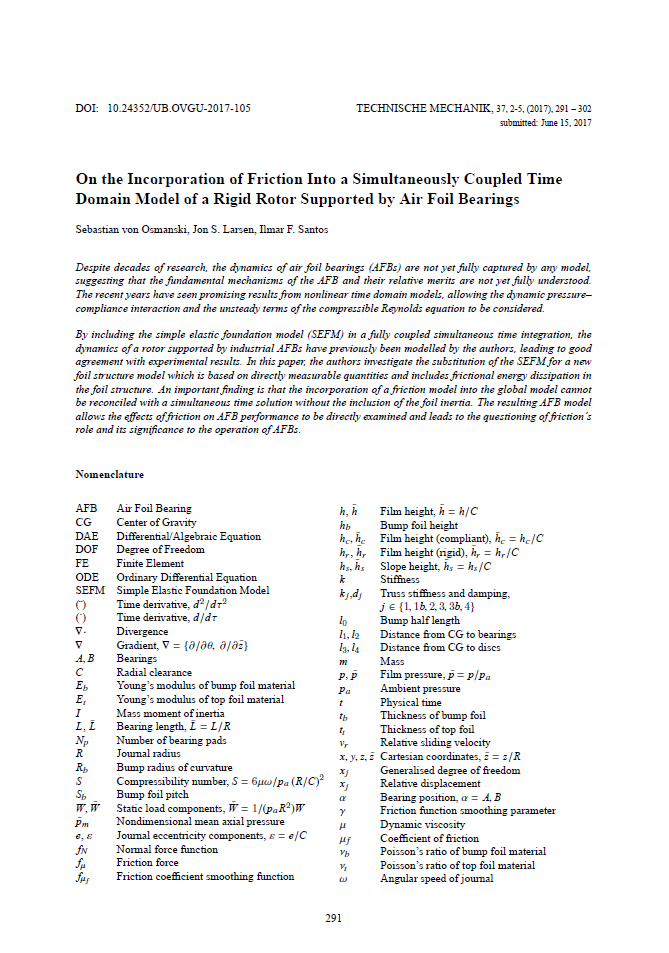On the Incorporation of Friction Into a Simultaneously Coupled Time Domain Model of a Rigid Rotor Supported by Air Foil Bearings
DOI:
https://doi.org/10.24352/UB.OVGU-2017-105Abstract
Despite decades of research, the dynamics of air foil bearings (AFBs) are not yet fully captured by any model, suggesting that the fundamental mechanisms of the AFB and their relative merits are not yet fully understood. The recent years have seen promising results from nonlinear time domain models, allowing the dynamic pressure– compliance interaction and the unsteady terms of the compressible Reynolds equation to be considered.
By including the simple elastic foundation model (SEFM) in a fully coupled simultaneous time integration, the dynamics of a rotor supported by industrial AFBs have previously been modelled by the authors, leading to good agreement with experimental results. In this paper, the authors investigate the substitution of the SEFM for a new foil structure model which is based on directly measurable quantities and includes frictional energy dissipation in the foil structure. An important finding is that the incorporation of a friction model into the global model cannot be reconciled with a simultaneous time solution without the inclusion of the foil inertia. The resulting AFB model allows the effects of friction on AFB performance to be directly examined and leads to the questioning of friction’s role and its significance to the operation of AFBs.





